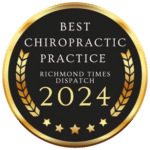We all know that eating certain foods can increase our heart disease risk, but actually changing our eating habits is tough! Once you know which foods to eat more of and which foods to limit, you’ll be well on your way to a heart-healthy diet. Whether you have years of unhealthy eating under your belt or you simply want to fine-tune your diet, here are a few heart-healthy diet tips to make the change process a little easier!
1. Control your portion size: How much you eat is just as important as what you eat! When you overload your plate, take seconds or eat until you feel full – it will lead to eating more calories than you should.
(For example, restaurant portions are often WAY more than anyone needs.)
Following a few simple tips to control food portion size can help you:
– Use a small plate or bow.
– Eat more low-calorie, nutrient-rich foods, such as fruits and vegetables
– Eat smaller amounts of high-calorie, high-sodium foods, such as refined, processed or fast foods.
2. Add in more veggies and fruits: These foods contain substances that may help prevent cardiovascular disease. Eating more fruits and vegetables may help you cut back on higher calorie foods that you would be more inclined to snack on as well!
3. Whole grains, whole grains, whole grains! These are great sources of fiber and other nutrients that play a role in regulating blood pressure and heart health. You want to avoid the white, refined flours and processed products (muffins, doughnuts, frozen waffles, white bread, etc).

4. Limit unhealthy fats: Limiting the amount of saturated and trans fats you eat is an important step to reduce your blood cholesterol, and also lowers your risk of coronary artery disease. A high blood cholesterol level can lead to a buildup of plaques in the arteries, which is called atherosclerosis, and can increase the risk of heart attack and stroke. When you do use fats, choose monounsaturated fats, such as olive oil. Polyunsaturated fats, found in certain fish, avocados, nuts and seeds, also are good choices for a heart-healthy diet.
5. Low fat protein is key! Lean meat, poultry and fish, low-fat dairy products, and eggs are some of the best sources of protein. Make sure to choose lower fat options, such as skinless chicken breasts vs fried chicken, etc. Fish is also a good alternative to high-fat meats.
Certain types of fish are rich in omega-3 fatty acids, which can lower blood fats called triglycerides. You’ll find the highest amounts of omega-3 fatty acids in cold-water fish, such as salmon, mackerel and herring. Legumes are also a good, low-fat source of protein and contain no cholesterol, making them good substitutes for meat.
6. Reduce sodium (salt) intake: Eating too much salt can lead to high blood pressure, a risk factor for heart disease. Limiting sodium is an important part of a heart-healthy diet. The American Heart Association recommends that healthy adults have no more than 2,300mg of sodium a day (about a teaspoon of salt), and that most adults ideally have no more than 1,500mg of sodium a day.
7. Plan ahead! Creating daily or weekly menus helps to keep on track and make grocery shopping easier. Preparing for the week is key in making sure you stick to your goals!
8. Enjoy a little treat from time to time: Make sure to allow yourself an indulgence every now and then! A small treat won’t undo all of your hard work on a heart-healthy diet. The key is balance over a long time!
Give us a call or visit the link below today to schedule your visit to keep your nervous system functioning at 100%! We’re here to help!



